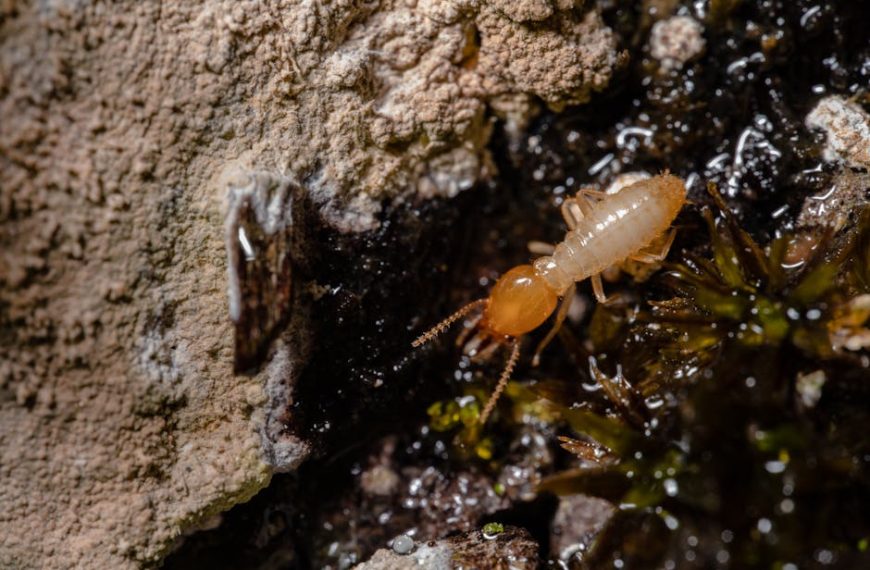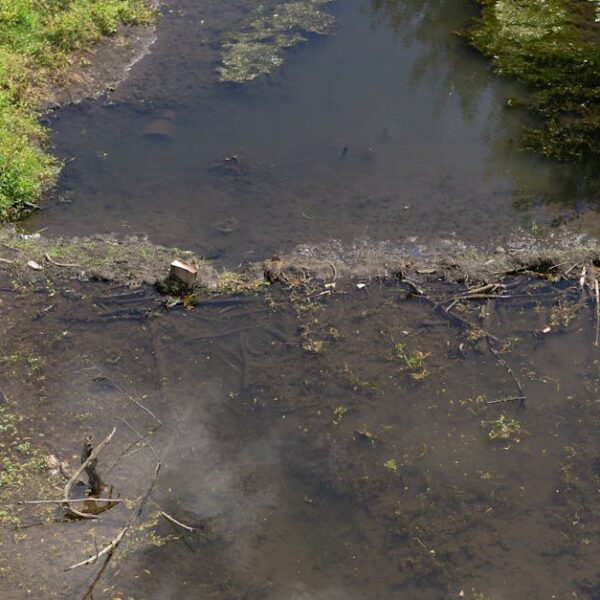When a potent aroma of burning plastic permeates your abode, it’s critical to ascertain its source ASAP. Failing to do so and ignoring could hold dire consequences for you, your loved ones and your property. This article elucidates on how to identify, address, and circumvent this situation.
Recognizing the Smell of Burning Plastic
Prompt identification of burning plastic’s insidious stench is instrumental in averting dangerous situations. This smell is distinctly acrid, vehemently assaulting your nostrils with a synthetic, noxious quality. It’s attributable to the combustion of hydrocarbons and phenols and bears significance beyond being a mere annoyance.
• The scent of burning plastic is typically heavy and choking – similar to a car’s exhaust or chemical fire. Some even equate it to road tarmac undergoing a hot resealing, with burning rubber qualities.
• Ignoring this diverse yet impactful odour is never a wise idea. Identify it promptly, ceasing any activities that could contribute to plastic combustion, and begin an immediate investigation of its source.
Potential Sources of the Burning Plastic Smell
Surprisingly, an extensive variety of household items can engender this unwelcome whiff. Their functionality often relies on high heat or electricity, and recklessness or malpractice could incite a dreaded burn.
• Appliances like toasters, coffee makers, and space heaters; electronics like laptops or gaming consoles; and other items such as light fixtures and hair dryers are some common sources.
• Each item possesses its underlying risks and probabilities. For instance, your recently-used toaster could end up a lesser concern than an overworked console, especially in a lively gaming household.
Dangers of Ignoring the Burning Plastic Smell
Consistent exposure to fumes from burning plastic holds substantial health repercussions. In the short run, victims may undergo headaches, dizziness, or allergic reactions, while long-term exposure could lead to severe illnesses like cancer or lung conditions.
Way to Combat: Controlling immediate exposure is pivotal. Opening windows and using fans to ventilate your space can prove to be lifesaving.
Immediate Steps:
- Identify the Source.
- Cease use of the offending item(s).
- Ventilate your space.
- Seek professional advice if needed.
Is the Smell of Laundry Detergent Related to the Burning Plastic Smell in My House?
If you’re noticing a burning plastic smell in your house, it’s important to investigate potential sources. While the smell of laundry detergent may seem similar, it’s essential to distinguish between everyday odors and harmful fumes. Understanding laundry detergent fragrance facts can help you determine if there’s an underlying issue.
Action Steps When You Smell Burning Plastic
Once you detect a burning plastic scent, taking swift, decisive actions can lead to safe, effective resolution of the incident.
• Firstly, switch off and unplug any potential culprits – from appliances to electronics.
• Evacuation comes next, especially in cases of concentrated or persistent odours.
• Checklist: Cut off power to the item, evacuate the area, call experts if the smell persists or the source can’t be identified.
Preventing Future Occurrences of a Burning Plastic Smell
It’s always better to be safe than sorry. Regular maintenance of household items and vigilance around electrical components stem the rise of hazardous situations.
• Regular check-ups of appliances, electronics and light fixtures can mitigate future risks.
• Avoid overloading sockets, regularly check faulty wiring and ensure proper usage of appliances.
• Safety Tip: Proper ventilation, emergency fire protocols, and using items as per their guidelines assists in reducing the probability of such incidents.
OMG – What is that burning plastic smell in the house?
Take a deep breath. Did the sharp, acrid smell of burning plastic sting your nostrils? If yes, you’re facing a potential risk that’s critical to address. Don’t sweep it under the rug—it can pose serious health threats and may be a sign of a looming disaster. In this guide, we’ll help you get to grips with how to identify, locate, and handle this issue to secure your safety.
Recognizing the Smell of Burning Plastic
First things first, let’s learn how to call the beast by its name. The smell of burning plastic is sharp and unpleasant – a strong, ghastly odor that’s like an unwelcome guest refusing to leave. It’s an acrid smell that you can’t ignore, as ignoring it can lead to serious repercussions.
- The smell of burning plastic is often compared to a chemical fire or to the fume-filled air surrounding asphalt roads during hot resealing.
- Some also identify it as akin to the exhaust fumes from a car or a burning rubber smell.
Best Practice: Don’t shrug it off. Once you catch whiffs of burning plastic, it’s crucial to pinpoint the source immediately. Stop everything you’re doing and start searching.
Potential Sources of the Burning Plastic Smell
The suspect list of household products that can emit the smell of burning plastic is quite long. This smell often comes from items that need heat or electricity to function – and when something goes wrong, you get the stench.
- Kitchen appliances like toasters and coffee makers, and household utilities like space heaters, hair dryers, and light fixtures are potential culprits.
- Even your beloved electronics like laptops, tablets, or gaming consoles can be the unsuspected offenders.
In terms of the likelihood of each item causing the smell, it’s more often the one you’ve recently used – a toaster used for breakfast or a heavily worked gaming console.
Dangers of Ignoring the Burning Plastic Smell
Playing with fire by ignoring the smell of burning plastic can unleash havoc on your health. Short-term exposure can cause allergic reactions, dizziness, or headaches. Turning a blind eye in the long run could lead to far more serious health consequences, such as cancer or fatal lung diseases.
♀️Pro Tip: Nip it in the bud. As soon as you detect such a smell, open all the windows, turn on the fans, and ensure good ventilation until the smell disperses.
Checklist for immediate safety:
- Sniff out the source of the smell.
- Stop using the malfunctioning object.
- Let clean air in by opening windows.
- Consult with professionals if the smell lingers even after you’ve done the above steps.
Action Steps When You Smell Burning Plastic
Caught a sniff of burning plastic? Be quick on your feet and step into action right away.
- Begin with switching off and unplugging the possible sources of the smell, be it appliances or electronics.
- If the smell is intense, evacuate everyone in the house immediately for their safety.
Safety Checklist: Disconnect the power, empty the premises, and call for professional help immediately for unidentifiable sources.
Preventing Future Occurrences of a Burning Plastic Smell
Prevention is better than cure! Here are some tips to keep your home safe from the kindling smell of burning plastic.
- Keep a check on all your appliances, make sure they are in good working condition, and replace anything that’s starting to wear out.
- Be cautious of overusing sockets; it’s better to unplug things when they’re not in use.
️Pro Tip: Practice these safety measures: Ensure all your appliances are well-ventilated, establish emergency fire protocols, and use each item exactly as specified in their user manuals.
Key Takeaway:
- The distinct, acrid smell of burning plastic requires immediate identification and action for the safety of household members and property.
- Various household appliances and electronics often emerge as the common culprits behind this distressing smell.
- Continual exposure to burning plastic fumes can lead to severe health conditions extending to fatal illnesses. Therefore, prompt ventilation plays a crucial role in combating this issue.
- Rapid action steps in terms of identifying the source, discontinuing the use of the faulty item, and seeking professional help if needed can ensure the efficient resolution of the scenario.
- Prevention strategies focus primarily on regular check-ups and maintenance of household appliances, vigilant use of electrical components, and adherence to the guidelines of respective appliances.
The impact of a burning plastic smell in your home can feel overwhelming, but understanding the various aspects equips you to efficiently detect, rectify, and prevent it. Following the guidelines and precautions can contribute to a safer home environment.
FAQs
Q: What if I can’t identify the source of the burning plastic smell?
A: Don’t panic if you can’t find the source immediately. Try to unplug all appliances and if the smell persists, seek professional help. It’s important to evacuate the premises, especially when the smell is strong or persistent.
Q: What are immediate symptoms of exposure to burning plastic fumes?
A: Symptoms can include headaches, dizziness, or allergic reactions, and these should be taken seriously. If experiencing any of these symptoms, seek fresh air immediately and consider medical attention.
Q: Are all household appliances potential causes of a burning plastic smell?
A: Many household appliances can potentially cause this smell if they malfunction or are used improperly, including toasters, coffee makers, space heaters, and electronics. Regular maintenance and proper use can help prevent this.
Q: Besides appliances, what other possibilities can lead to a burning plastic smell?
A: Overheated electrical wiring and overloaded sockets can also cause a burning plastic smell. Hence, regular checks for faulty wiring and avoiding overloading of sockets can prevent this.
Q: How can I prevent the occurrence of a burning plastic smell?
A: Regular maintenance of your appliances, ensuring proper ventilation, avoiding overloading sockets and using appliances as per their operational guidelines can help in preventing this problem.
We encourage you to share this article with others, further expanding the community of safety-conscious individuals. Explore other posts on our website for more insights and guidance.












